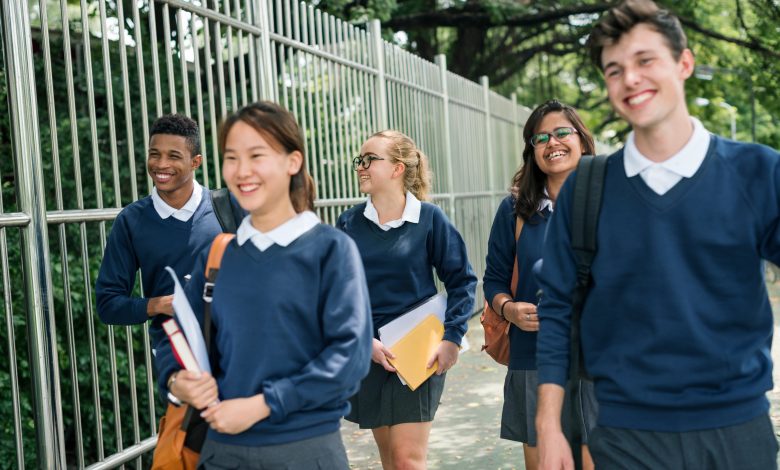
Parents, carers and wider school communities can now access the latest information on schools in their area on the Australian Curriculum, Assessment and Reporting Authority (ACARA) My School website, which has been updated with 2024 NAPLAN data and other school-level information.
“With detailed information on around 10,000 schools right across Australia, ACARA’s My School is the only website that provides parents, carers and the community with clear and transparent information on every Australian school,” said ACARA’s CEO, Stephen Gniel. “ACARA’s role is to provide detailed, accessible, timely and meaningful school education performance information. ACARA’s My School provides that through the publication of nationally consistent, school-level data for all Australians to see.
Read the latest print edition of School News HERE
“We need to know how our schools are doing, but it is also important that this information is presented in a way that considers the individual circumstances of a school, especially its level of socio-educational advantage, which our reporting takes into account.
The Australian Secondary Principals’ Association (ASPA) noted the release of the 2024 My School data, acknowledging the achievements of schools and systems demonstrating improved student outcomes. ASPA President, Andy Mison, commended ACARA’s emphasis on “schools making a difference,” and attempts to shift the focus away from simplistic league tables.
“It’s vital to celebrate the successes of schools and their positive impact on children’s lives,” Mr Mison said. “The 2024 data showcases numerous examples of schools effectively enhancing student learning. We particularly applaud the improvements in literacy observed in schools and systems prioritising reading skills, a fundamental foundation for lifelong learning.”
While ASPA supports transparency and accountability in education, Mr Mison expressed ongoing concerns about media narratives that predominantly suggest “winners and losers,” within a narrow and flawed conception of education as a competitive industry.
“The current reporting tends to favour schools already benefiting from socio-economic advantages, such as high fee-paying private schools and selective public schools,” he noted. “This reinforces the growing segregation within Australia’s education system and underscores the inequitable distribution of opportunities for students from different backgrounds.”
ASPA remains apprehensive about the potential for My School data to exacerbate the residualisation of disadvantaged students. Mr Mison explained, “Publishing individual school results can lead to declining enrolments and resource allocation in schools perceived as less desirable, creating a downward spiral that further diminishes their capacity to support student learning.”
ASPA calls for a more nuanced and balanced approach to media reporting on My School data, one that celebrates progress while acknowledging the complex factors influencing student outcomes and advocating for equitable educational opportunities for all Australian students.

Independent Schools Australia (ISA) recently released its Independent Schooling 2024 -Enrolment Trends, Characteristics and Projections report, which revealed an ongoing shift towards Independent schools, driven by middle to low-income families, who ISA assert are increasingly making significant sacrifices for their children’s education.
ISA CEO Graham Catt said the report highlights the true diversity and community role of Independent schools, debunking common misconceptions and highlighting the wide spectrum of students and families they serve.
“This data dismantles outdated stereotypes used to unfairly target Independent schools,” Mr Catt said. “Contrary to some commentary, most Independent schools are accessible and affordable, with median annual fees of just $5,537. The growth we’re seeing is primarily driven by families in outer and inner suburban areas who, despite economic pressures, are choosing to invest in their children’s future.
“Many of these families make significant sacrifices for this choice, and it’s distressing for them and for educators to see their decision targeted by those looking to score political points. We need to ensure their choices are supported, not undermined.”
The Australian Education Union used the My School website data and NAPLAN results to again argue for for the full funding of public schools, saying that additional resourcing is required to address educational inequality and disadvantage.
AEU Federal President Correna Haythorpe said NAPLAN is just one measure of student achievement, however its data adds to the large evidence base about the inequality in Australia’s education system caused by the ongoing underfunding of our public schools. “The failure of successive governments to address the underfunding of public schools is leading to entrenched disadvantage and educational segregation in Australia,” Ms Haythorpe said.
“We cannot close achievement gaps without closing resources gaps and it is long past time for governments to close the resource gaps impacting public schools.”
The December 2024 My School update includes:
- 2024 NAPLAN results for schools
- 2024 school profile and enrolment data
- 2024 school attendance data for Semester 1
- 2023 school financial information, including recurrent funding and capital expenditure
- 2023 vocational education training participation and outcomes
- 2023 year 12 certifications.







